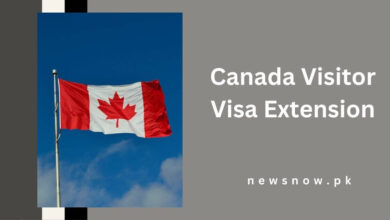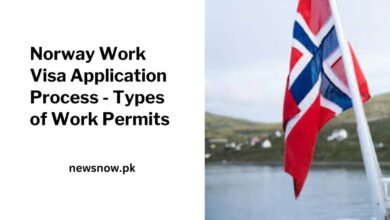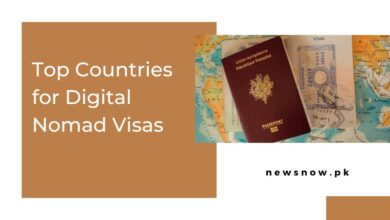American Work Visa Types 2025 – Visit Here
The United States provides an abundance of employment prospects for non-citizens on account of its diverse selection of work visa alternatives. There is likely an ideal visa for you, whether you are an IT specialist, a trained agricultural laborer, or an executive seeking a transfer within your organization. However, with so many options available, it can be difficult to determine which visa to apply for.
This article will therefore clarify the various categories of work visas for the United States by delineating their objectives, eligibility requirements, and application procedures. Are you prepared to locate the ideal visa to realize your American dream? We shall plunge in!
Categories of US Work VISA Types:
Permanent residency visas and temporary nonimmigrant visas are the two primary classifications of work visas offered by the United States. Thus, let’s begin by defining the fundamental distinction between these two. US permanent immigrant visas are for individuals who intend to live and work in the United States indefinitely and result in the issuance of a green card, whereas temporary nonimmigrant visas are intended for short-term employment in the country and do not directly lead to permanent residency.
Benefits of American Work Visas:
- Employment Lawful: An American work visa grants permission for lawful employment within the United States, thereby guaranteeing adherence to labor and immigration regulations. This legality provides employers and employees with stability and peace of mind.
- Access to a Dynamic Job Market: The United States boasts an expansive and ever-changing labor market that offers prospects in a variety of sectors, such as education, technology, healthcare, finance, and entertainment. By granting individuals access to these opportunities, work visas enable them to locate positions that align with their professional aspirations and skill sets.
- Professional Development: Opportunities for professional growth and development are available to those who work in the United States. Individuals have the opportunity to develop their expertise, expand their skill set, and obtain exposure to cutting-edge technologies and methodologies. This experience may prove beneficial for professional growth and development, both domestically and abroad.
- Greater Earning Potential: In comparison to many other nations, salaries and benefits in the United States are typically competitive and can be substantially greater. An increased capacity for earning can result in a higher quality of life and enhanced economic security.
- Opportunities for Networking: Working in the United States provides the chance to establish a strong professional network. These relationships may result in future collaborations, employment opportunities, and career advancement. Additionally, networking in the United States can grant access to international markets and business contacts.
- Quality of Life: The quality of life in the United States is exceptional, encompassing access to healthcare, education, and infrastructure that are on a global scale. The wide array of recreational and cultural prospects present throughout the nation enhances the quality of life by providing a comprehensive and gratifying experience.
- A Route to Permanent Residency: Specific employment visas, including the H-1B visa, may function as a means to obtain a Green Card, or permanent residency, in the United States. This grants individuals further rights and benefits and permits them to reside and work indefinitely in the United States.
- Family Benefits: Visa holders are permitted to bring their immediate family members (spouse and children) along with them on several U.S. work visas. Dependent visas grant permission for dependents to reside, study, and, in certain instances, work within the United States.
- Education Accessibility: The United States is host to a number of the preeminent educational establishments globally. Family members of work visa holders may be granted access to prestigious educational institutions, such as public schools for their offspring and collegiate advancement prospects.
- Cultural Exchange: The opportunity to reside and perform in the United States provides an unparalleled cultural exchange. People can participate in a multicultural society, gain new perspectives, and fully immerse themselves in American culture. Engaging in this cultural exchange has the potential to enhance one’s personal growth and expand their perspective on the world.
- Entrepreneurship and Innovation: The United States is renowned for its entrepreneurial and innovative character. Opportunities to participate in innovative initiatives and startups may present themselves as a result of the setting in which one works. Certain visas, including the E-2 investor visa, grant individuals the authority to establish and oversee their enterprises, catering to those who possess inventive aspirations.
Check Also: Norway Work Visa Application Process – Types of Work Permits
Types of All US Work Visas:
The following is an exhaustive overview of the primary categories of work visas that will be accessible in the United States during the year 2024.
Temporary Nonimmigrant Visas:
1# H-1B Visa (Specialty Occupations)
- Purpose: Experts in specialized domains including finance, engineering, and information technology.
- Qualifications: A bachelor’s degree or its equivalent in a pertinent discipline is mandatory. A Labor Condition Application (LCA) must be submitted by the employer to the Department of Labor.
- Duration: Extending from an initial period of up to three years to a maximum of six years.
- Application Procedure: USCIS receives Form I-129 from the employer. Upon receiving approval, the candidate is required to appear for a visa interview at a U.S. consulate and submit Form DS-160.
2# H-2A Visa (Temporary Agricultural Workers)
- Purpose: For seasonal agricultural labor purposes.
- Eligibility: An employment offer from a U.S. employer and evidence of an inadequate number of available U.S. workers are eligibility prerequisites.
- Prolonged duration: One year, potentially extended.
- Application Procedure: Following the acquisition of temporary labor certification from the Department of Labor, the employer proceeds to submit Form I-129.
3# L-1 Visa (Intracompany Transferees)
- Purpose: For personnel transferring within a multinational organization.
- Eligibility: Must have held a managerial or specialized knowledge position with the organization overseas for a minimum of one year within the previous three years.
- Duration: L-1A (up to seven years) for administrators and L-1B (up to five years) for employees with specialized knowledge.
- Application Procedure: USCIS receives Form I-129 from the employer. After submitting the DS-160 visa application, the employee is invited to an interview.
4# O-1 Visa (Individuals with Extraordinary Ability or Achievement)
- Purpose: In recognition of outstanding professionals specializing in disciplines including sciences, arts, education, business, or athletics.
- Qualifications: Must exhibit consistent recognition at the national or international level.
- Duration: The initial duration of up to three years; extensions are conceivable.
- Application Process: Form I-129 containing evidence of extraordinary ability is submitted by the employer. After completing the DS-160, the candidate is invited to an interview.
5# TN Visa (NAFTA Professionals)
- Purpose: For Canadian and Mexican professionals by the United States-Mexico-Canada Agreement.
- Eligibility: Eligibility criteria include possessing an employment offer in one of the designated professions and fulfilling particular educational and licensing prerequisites.
- Maximum duration: three years, renewable.
- Application Process: Applicants from Canada submit their applications directly at the port of entry into the United States, whereas Mexican citizens must register at the U.S. embassy or consulate.
Permanent Immigrant Visas (Employment-Based):
1# EB-1 Visa (Priority Workers)
- Purpose: To recognize and honor exceptional scientists, professors, and executives from multinational corporations.
- Eligibility: Eligibility requirements include exceptional ability or a substantial track record of academic or business leadership.
- Duration: Resulting in permanent residency.
- Application Procedure: USCIS receives Form I-140 from the employer. The applicant proceeds with consular processing or adjustment of status within the United States upon approval.
2# EB-2 Visa (Professionals with Advanced Degrees or Exceptional Ability)
- Purpose: Instructing professionals who hold advanced degrees or possess exceptional aptitude in their respective domains.
- Eligibility criteria: labor certification and an employment offer, unless the National Interest Waiver waives these requirements.
- Duration: Resulting in permanent residency.
- Application Procedure: Commencing with Form I-140, analogous to the EB-1.
3# EB-5 Visa (Immigrant Investor Program)
- Purpose: For investors who generate employment in the United States.
- Eligibility: The establishment of a minimum of ten positions exclusively for U.S. workers and a minimum investment of $1.8 million (or $900,000 in targeted employment areas) are prerequisites.
- Duration: Resulting in permanent residency.
- Application Procedure: USCIS receives Form I-526 from the investor. They proceed with consular processing or status adjustment following approval.
9 Easy Steps to Apply for American Work VISA:
Locating and applying for visa-sponsoring employment in the United States requires multiple steps. The following comprehensive guide will assist you in navigating the process:
- Secure employment: Obtain an offer of employment from a U.S. employer who is amenable to sponsoring your visa.
- Employer Petition: The petition for an employer is submitted to the U.S. Citizenship and Immigration Services (USCIS) on Form I-129 (https://www.uscis.gov/i-129) for the majority of work visas.
- Obtaining Petition Approval: You will be issued a Notice of Action (Form I-797 https://www.uscis.gov/forms/filing-guidance/form-i-797-types-and-functions) once USCIS has approved the petition.
- Complete the Visa Request: Save the confirmation document after completing the DS-160 form (https://ceac.state.gov/genniv/) or the DS-260 form (https://travel.state.gov/content/travel/en/us-visas/visa-information-resources/forms/online-immigrant-visa-forms/ds-260-faqs.html) online for nonimmigrant or immigrant visas, respectively.
- Visa Fee Payment: Acquire the necessary visa application fee.
- Biometric Appointment: Arrange and appear for a biometric appointment, which consists of fingerprinting and a photograph, at a Visa Application Center (VAC).
- Interview for a Visa: Arrange and appear for an interview at the consulate or embassy of the United States in the country where you reside. A passport, confirmation of application, and supporting documentation are required.
- Visa Obtainment: Upon visa approval, a visa insignia will be affixed to your passport. It is available for pickup at the consulate or delivery to the specified address.
- Visitor travel to the United States: Upon entering the United States on your visa, begin working!
Frequently Asked Questions:
How to get a U.S. work permit?
Submit an Application for Employment Authorization (Form I-765), together with the required filing fee, if you want to obtain a work permit (EAD). Depending on your category of immigration, the duration of your EAD work permit can vary from one to two years.
How long is a work permit in USA?
The duration of your work permit is dependent upon your present immigration status or the type of visa that allowed you entry. A year is the standard validity period for EADs. It is apparent nevertheless, that work permits will not be extended above the duration of an individual’s authorized stay in the United States.
Is getting U.S. work visa easy?
The application process for a work visa in the United States can be long and challenging. You may improve your chances of obtaining a work visa and establishing a successful profession in the United States by taking these steps. The main goal of Indian nationals seeking a work visa to the United States is to find employment.




